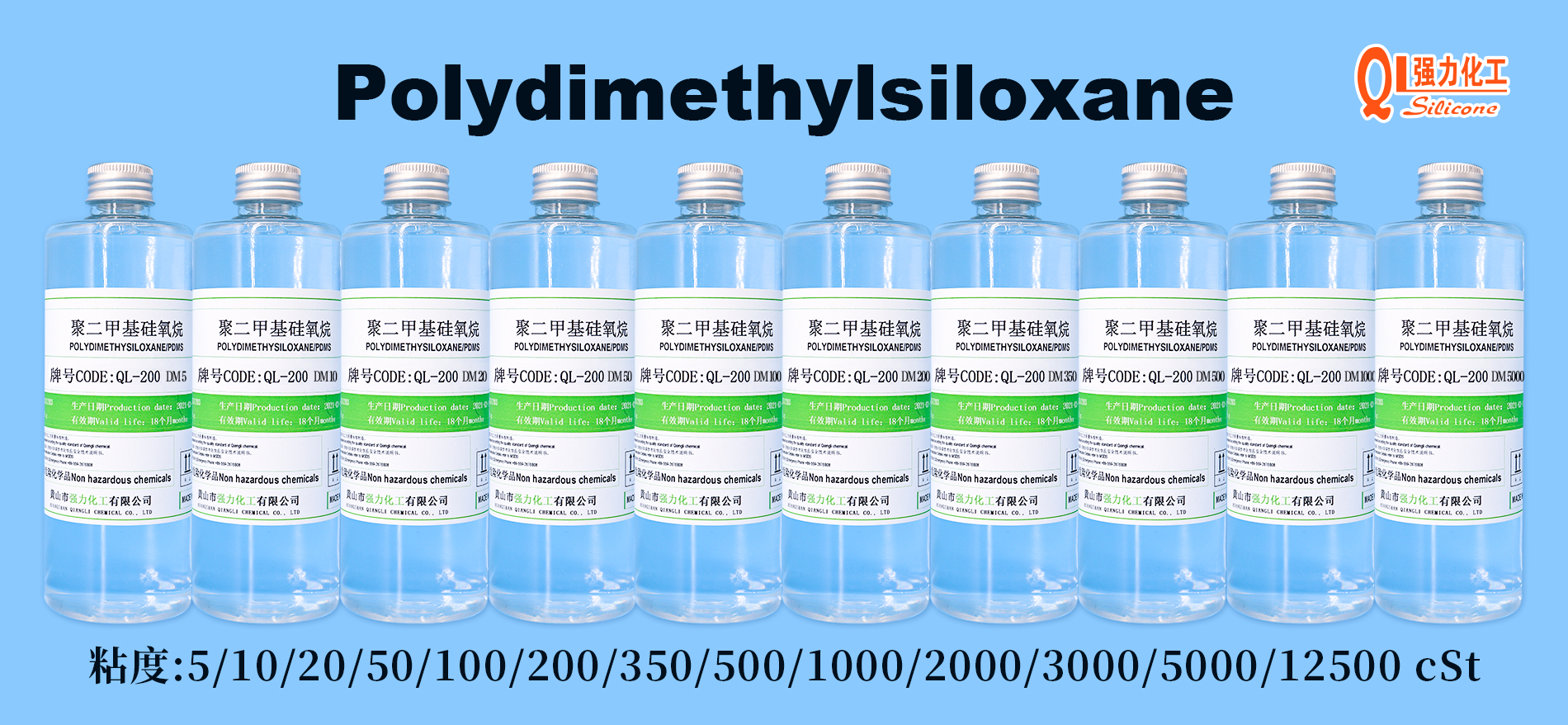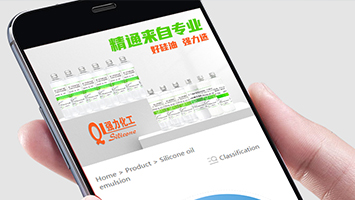In the field of defoamer production, the viscosity of dimethyl silicone oil (polydimethylsiloxane) needs to be selected based on the specific application scenario and performance requirements. The following is a detailed analysis based on industry practice and technical data:

1. Common viscosity range
The viscosity of dimethyl silicone oil used in defoamers is usually concentrated between 100 and 1000 cSt (centistokes), which can be divided into the following ranges:
Low viscosity (100~500 cSt)
Typical models: 100 cSt, 200 cSt, 350 cSt, 500 cSt.
Application scenarios:
Fast defoaming requirements: such as foam control in food processing and beverage production, low viscosity silicone oil can quickly spread on the liquid surface and destroy the foam structure.
Water-based system: In the fields of coatings, inks, water treatment, etc., low viscosity silicone oil is easy to disperse, avoiding thickening or turbidity problems caused by high viscosity.
Advantages: good dispersibility and fast defoaming speed, suitable for scenes requiring instant defoaming.
Medium and high viscosity (500~1000 cSt)
Typical models: 500 cSt, 750 cSt, 1000 cSt.
Application scenarios:
High temperature or high viscosity system: such as high temperature defoaming in petrochemical industry and textile printing and dyeing, high viscosity silicone oil can maintain stability at high temperature to prevent volatilization or decomposition.
Long-term anti-foaming demand: such as industrial fermentation and pharmaceutical process, the protective film formed by high viscosity silicone oil is more durable and inhibits foam regeneration.
Advantages: strong thermal stability, long anti-foaming time, suitable for complex working conditions.
Special high viscosity (>1000 cSt)
Typical models: 12500 cSt, 30000 cSt.
Application scenarios:
Extreme conditions: such as high-pressure hydraulic oil defoaming, high-temperature lubrication in the aerospace field, high viscosity silicone oil can provide stronger shear resistance and sealing.
Customized requirements: In some patented formulas, high viscosity silicone oil is compounded with other ingredients to improve the comprehensive performance of the defoamer.
2. Key factors affecting viscosity selection
Application environment
Temperature: Silicone oil with viscosity ≥1000 cSt should be selected in high temperature environment (such as above 200℃), which has better thermal stability.
System properties:
Water-based system: Low-viscosity silicone oil (100~500 cSt) is easy to emulsify and disperse to avoid oil droplet aggregation.
Oil-based system: Medium- and high-viscosity silicone oil (500~1000 cSt) is more compatible with mineral oil to prevent stratification.
Defoaming performance requirements
Breaking speed: Low-viscosity silicone oil has lower surface tension and faster spreading speed, which is suitable for rapid defoaming.
Foam suppression durability: High-viscosity silicone oil forms a thicker protective film and has a longer foam suppression time.
Regulations and safety
Food and medicine field: It must comply with pharmacopoeia standards. For example, pharmaceutical-grade dimethyl silicone oil is divided into multiple models from 20 to 30,000 cSt, and 1000 cSt is a common specification.
Environmental protection requirements: Some industries (such as food processing) need to use food-grade silicone oil (such as 100 cSt, 200 cSt) to ensure non-toxicity and harmlessness.
3. Balance between viscosity and performance
Dispersibility vs. stability
Low-viscosity silicone oil has good dispersibility, but it is easy to be diluted in high-speed stirring or high-temperature environment, resulting in a decrease in defoaming effect.
High-viscosity silicone oil has strong stability, but it needs to be used with emulsifiers or dispersants, otherwise agglomeration may occur.
Cost considerations
The production cost of high-viscosity silicone oil is relatively high. On the premise of meeting performance requirements, medium and low viscosity models are preferred to reduce costs.
Compounding technology
In actual production, silicone oils of different viscosities are often compounded. For example, 500 cSt silicone oil is used for rapid bubble breaking, and 1000 cSt silicone oil is used for long-term bubble suppression. The two work together to improve the overall performance.
4. Precautions
Compatibility test: Different systems need to verify the defoaming effect of silicone oil through experiments to avoid performance degradation due to component conflicts.
Addition amount control: The addition amount of silicone oil is usually 0.1~1% (mass ratio). Excessive addition may cause side effects (such as coating defects).
Storage conditions: Silicone oil should be sealed and stored in a cool and dry place to avoid high temperature or direct sunlight affecting viscosity stability.
Summary
The viscosity range of dimethyl silicone oil used in defoamers is usually 100~1000 cSt. The specific selection needs to be combined with the application environment, performance requirements and regulatory standards. Low-viscosity silicone oil is suitable for rapid defoaming and water-based systems, and medium- and high-viscosity silicone oil is suitable for high temperature, high viscosity or long-term anti-foaming scenarios. In actual production, compounding technology and supplier technical support can help optimize the formula and improve the comprehensive performance of the defoamer.




